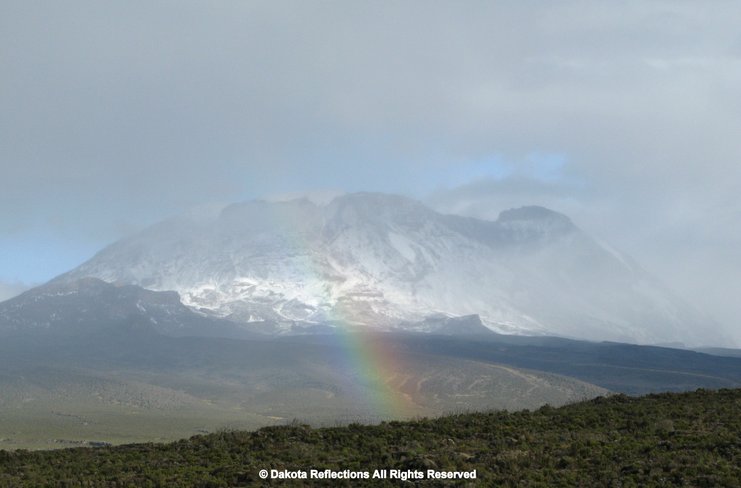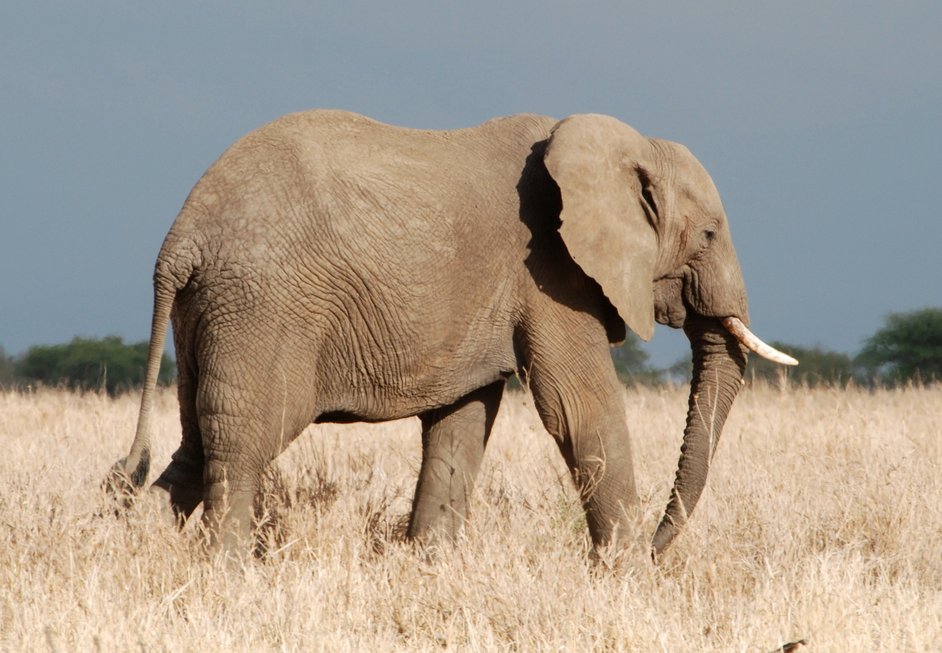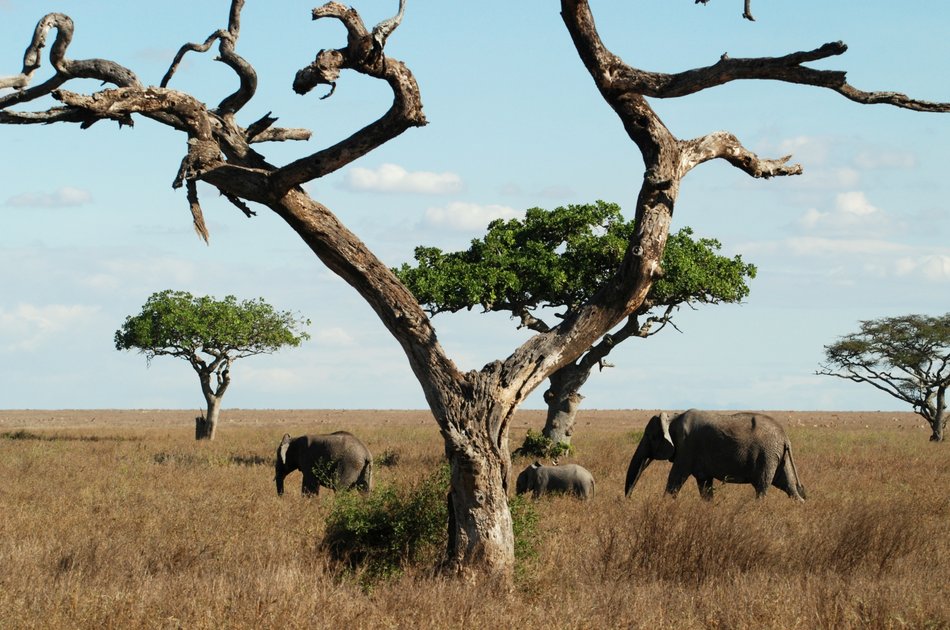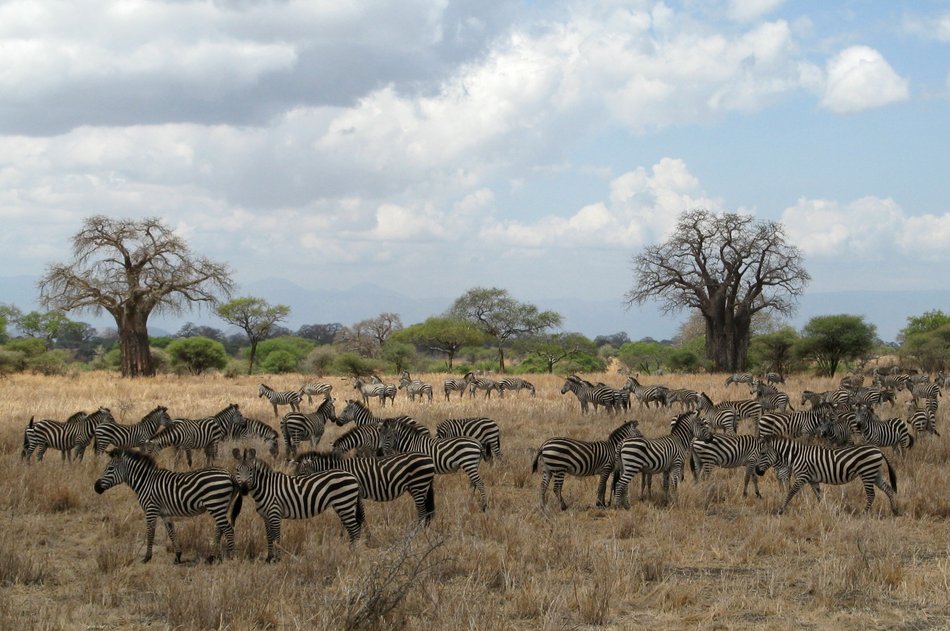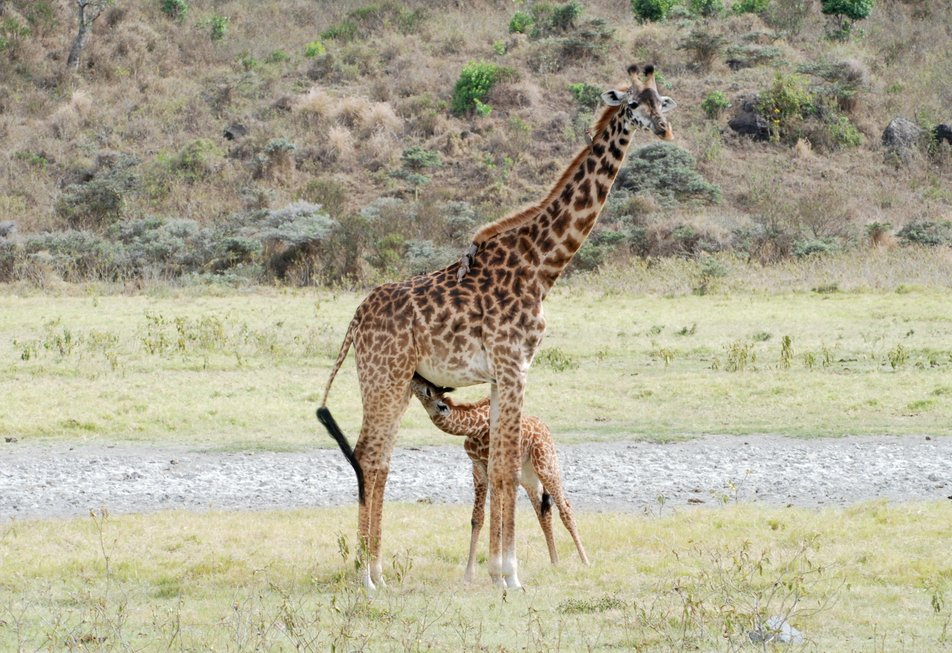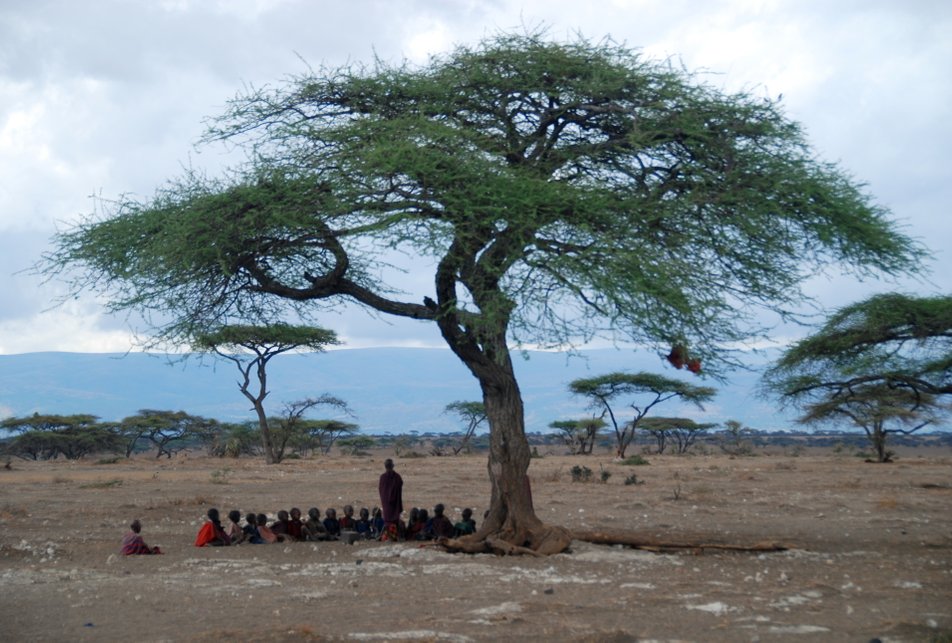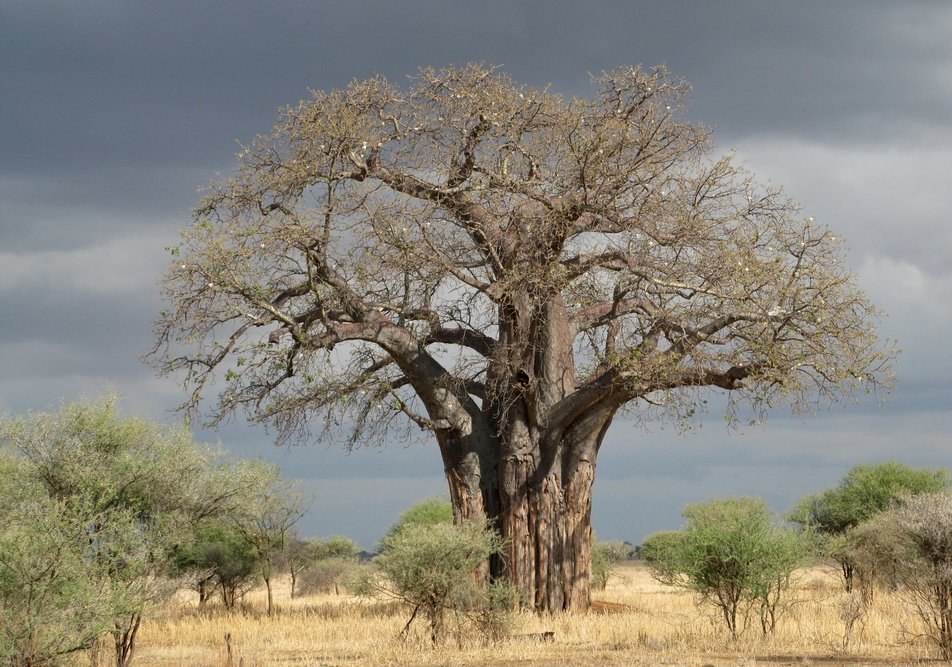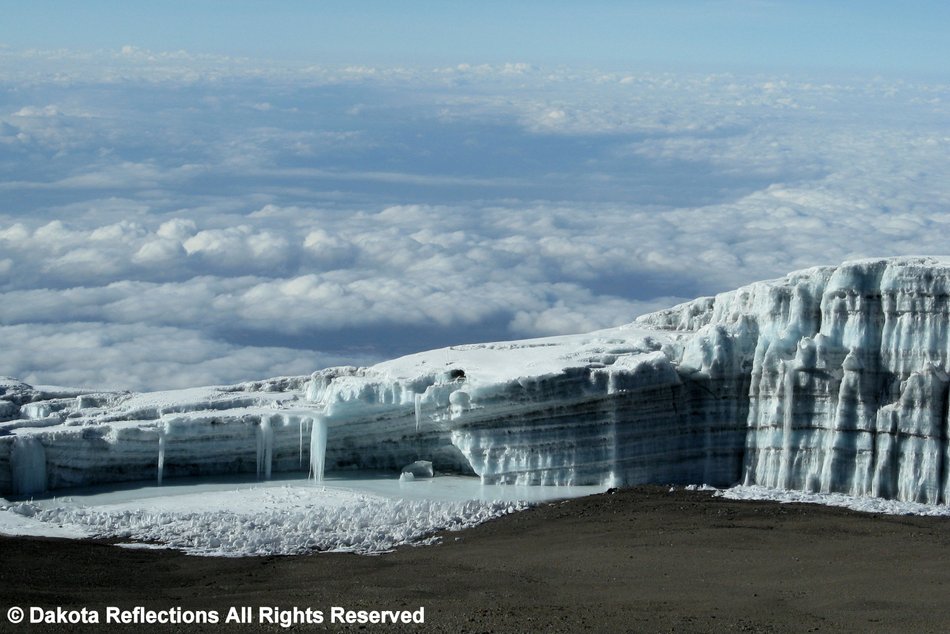Dakota Reflections
Africa is the world's second-largest and second-most populous continent, after Asia in both cases. Africa covers 6% of Earth's total surface area and 20% of its land area. With 1.4 billion people as of 2021, it accounts for about 18% of the world's human population. Africa's population is the youngest amongst all the continents; the median age in 2012 was 19.7, when the worldwide median age was 30.4. Despite a wide range of natural resources, Africa is the least wealthy continent per capita and second-least wealthy by total wealth, behind Oceania. Scholars have attributed this to different factors including geography, climate, tribalism, colonialism, the Cold War, neocolonialism, lack of democracy, and corruption.
https://en.wikipedia.org/wiki/Africa
There are 54 countries in Africa
Rainbow before Mt. Kilimanjaro
Shira I Camp
Mount Kilimanjaro National Park, Tanzania
November 3, 2007
African Elephant
Tarangire National Park, Tanzania
November 10, 2007
African Elephants
Serengeti National Park, Tanzania
November 12, 2007
Zebras
Ngorongoro National Park, Tanzania
November 11, 2007
Giraffe Nursing
Arusha National Park, Tanzania
October 31, 2007
Giraffes
Arusha National Park, Tanzania
October 31, 2007
Maasai Outdoor Classroom
Tanzania
November 12, 2007
Baobab Tree
Ngorongoro National Park, Tanzania
November 11, 2007
Glacier
Uhuru Peak
Mount Kilimanjaro National Park, Tanzania
November 8, 2007
Ngorongoro Conservation Area
The Ngorongoro Conservation Area Authority was established by the Game Park Laws Act, 1976, and owns the majority of Ngorongoro Conservation Area land, including the Crater. The area became a UNESCO World Heritage Site in 1979, originally inscribed for its natural significance. The conservation area land is multi-use and unique because it is the only conservation area in Tanzania that protects wildlife while allowing human habitation. Land use is controlled to prevent negative effects on the wildlife population. For example, cultivation is prohibited at all but subsistence levels.
The main feature of the Ngorongoro Conservation Authority is the Ngorongoro Crater, the world's largest inactive, intact and unfilled volcanic caldera. The crater, which formed when a large volcano exploded and collapsed on itself two to three million years ago, is 610 metres (2,000 feet) deep and its floor covers 260 square kilometres (100 square miles). Estimates of the height of the original volcano range from 4,500 to 5,800 metres (14,800 to 19,000 feet) high. The crater floor is 1,800 metres (5,900 feet) above sea level. The Ngorongoro volcano was active from about 2.45 to 2 million years ago.
Approximately 25,000 large animals, mostly ungulates, live in the crater. Large mammals in the crater include the black rhinoceros (Diceros bicornis michaeli), the local population of which declined from about 108 in 1964-66 to between 11–14 in 1995, the African buffalo or Cape buffalo (Syncerus caffer), and the hippopotamus (Hippopotamus amphibius). There also are many other ungulates: the blue wildebeest (Connochaetes taurinus) (7,000 estimated in 1994), Grant's zebra (Equus quagga boehmi) (4,000), the eland (Taurotragus oryx), and Grant's (Nanger granti) and Thomson's gazelles (Eudorcas thomsonii) (3,000).[29] Waterbucks (Kobus ellipsiprymnus) occur mainly near Lerai Forest.
Absent are Giraffe, impala (Aepyceros melampus), topi (Damaliscus lunatus), oribi (Ourebia oribi), crocodile (Crocodylus niloticus). Cheetah (Acinonyx jubatus raineyi), East African wild dog (Lycaon pictus lupinus), and African leopard (Panthera pardus pardus) are rarely seen. Spotted hyenas (Crocuta crocuta) have been the subject of a long-term research study in the Ngorongoro Conservation Area since 1996.
Although thought of as "a natural enclosure" for a very wide variety of wildlife, 20 percent or more of the wildebeest and half the zebra populations vacate the crater in the wet season, while Cape buffalo (Syncerus caffer) stay; their highest numbers are during the rainy season.
Since 1986, the crater's wildebeest population has fallen from 14,677 to 7,250 (2003-2005). The numbers of eland and Thomson's gazelle also have declined while the buffalo population has increased greatly, probably due to the long prevention of fire which favors high-fibrous grasses over shorter, less fibrous types.
Lake Magadi, a large lake in the southwest of the crater, is often inhabited by thousands of mainly lesser flamingoes.
The crater has one endemic species of mammal: Mduma's shrew (Crocidura mdumai), which is restricted to montane forests on the edge of the crater. This shrew is considered endangered due to deforestation from smallholder farming.
The crater has one of the most dense known population of lions, numbering 62 in 2001.
A side effect of the crater being a natural enclosure is that the lion population is significantly inbred. This is due to the very small amount of new bloodlines that enter the local gene pool, as very few migrating male lions enter the crater from the outside. Those who do enter the crater are often prevented from contributing to the gene pool by the crater's male lions, who expel any outside competitors.
https://en.wikipedia.org/wiki/Ngorongoro_Conservation_Area
Serengeti National Park
The Serengeti National Park is a large national park in northern Tanzania that stretches over 14,763 km2 (5,700 sq mi). It is located entirely in eastern Mara Region and north east portion of Simiyu Region and contains over 1,500,000 hectares (3,700,000 acres) of virgin savanna. The park was established in 1940. The Serengeti is well known for the largest annual animal migration in the world of over 1.5 million blue wildebeest and 250,000 zebra along with smaller herds of Thomas' Gazelle and eland. The national park is also home to the largest lion population in Africa. It is under threat from deforestation, population growth and ranching. The name "Serengeti" is an approximation of the word siringet used by the Maasai people for the area, which means "the place where the land runs on forever".
Serengeti National Park forms a Lion Conservation Unit since 2005 together with Maasai Mara National Reserve. More than 3,000 lions live in this ecosystem. The population density of the African leopard is estimated at 5.41 individuals per 100 km2 (39 sq mi) in the dry season.
African bush elephant herds recovered from a population low in the 1980s caused by poaching, and numbered over 5,000 individuals by 2014. The African buffalo population declined between 1976 and 1996 due to poaching, but increased to 28,524 individuals by 2008. The black rhinoceros population was reduced to about 10 individuals in the 1980s due to poaching, and less than 70 individuals survive in the park today. Rhinos mostly browse on grasses, woody Indigofera, Acacia and Crotalaria forbs and shrubs.
Other mammal carnivores include the Cheetah, about 3,500 spotted hyena, Black-backed jackal, African golden wolf, honey badger, striped hyena, caracal, serval, banded mongoose, and two species of otters. The African wild dog was reintroduced to the area in 2012 after disappearing in 1991. Other mammals include hippopotamus, common warthog, aardvark, aardwolf, African wildcat, African civet, common genet, zorilla, african striped weasel, bat-eared fox, ground pangolin, crested porcupine, three species of hyraxes and cape hare. Primates such as yellow and olive baboons, patas monkeys, and vervet monkey, mantled guereza are also seen in the gallery forests of the Grumeti River.
Reptiles include Nile crocodile, leopard tortoise, serrated hinged terrapin, rainbow agama, Nile monitor, Jackson's chameleon, African python, black mamba, black-necked spitting cobra, and puff adder.
More than 500 bird species can be seen such as Masai ostrich, secretarybird, kori bustards, helmeted guineafowls, Grey-breasted spurfowl, blacksmith lapwing, african collared dove, red-billed buffalo weaver, southern ground hornbill, crowned cranes, sacred ibis, cattle egrets, black herons, knob-billed ducks, saddle-billed storks, white stork, goliath herons, marabou storks, yellow-billed stork, spotted thick-knees, lesser flamingo, shoebills, abdim's stork, hamerkops, hadada ibis, african fish eagles, pink-backed pelicans, tanzanian red-billed hornbill, martial eagles, egyptian geese, lovebirds, spur-winged geese, oxpeckers, and many species of vultures.
The great migration is the world's longest overland migration. The complete migration route is around 800 km (500 mi). South of this migration route covers the Ngorongoro Conservation Area where around half a million Wildebeest are born between January and March. By March, at the beginning of the dry season, roughly 1.5 million and 250,000 zebras start to migrate heading north towards Maasai Mara in Kenya. Common eland, plains zebra, and Thomson's gazelle join the wildebeest. In April and May, the migrating herds pass through the Western Corridor. To get to the Maasai Mara, the herds have to cross the Grumeti and Mara Rivers where around 3,000 crocodiles lie in wait. For every wildebeest captured by the crocodiles, 50 drown. When the dry season ends in late October, the migrating herds start to head back south. Around 250,000 wildebeests and 30,000 plains zebras die annually from drowning, predation, exhaustion, thirst, or disease.
https://en.wikipedia.org/wiki/Serengeti_National_Park

